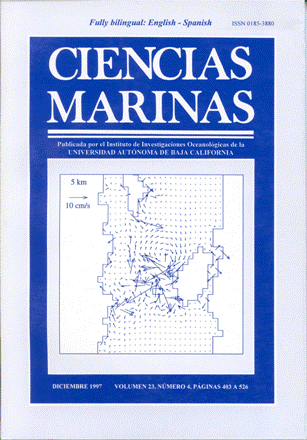Space-time variations in macrobenthic fauna of a sandy beach, related to changes in the beach profile and sediment grain size, at El Pelicano Beach, Baja California
Main Article Content
Abstract
Time-space variations in macrobenthonic biocenosis are described in relation to the morphology of the beach profile and textural characteristics of the sediment at El Pelícano Beach, South of San Felipe, Baja California, Mexico. Sampling was carried out in March, May, September and November 1993 along a beach profile, at fixed stations from the higher high tide to the lower low tide. Abundance data matrices were analyzed by applying a Q-mode cluster analysis, in order to establish community structural changes and compare them with changes in the beach profíle and sediment grain size. In general, the number of species was consistently low and varied with the textural characteristics of the sediment and the morphology of the beach profile. Only the gastropod Nassarius iodes was dominant in all the samplings and beach protile levels, because of its tendency to follow the tide in order to remain in the swash zone where feeding conditions are optimum. Community structural changes at El Pelícano Beach indicate that the ecological and paleoecological interpretation of comparable coastal environments is complex, because of the biotic and biotic time-space variability.
Downloads
Article Details
This is an open access article distributed under a Creative Commons Attribution 4.0 License, which allows you to share and adapt the work, as long as you give appropriate credit to the original author(s) and the source, provide a link to the Creative Commons license, and indicate if changes were made. Figures, tables and other elements in the article are included in the article’s CC BY 4.0 license, unless otherwise indicated. The journal title is protected by copyrights and not subject to this license. Full license deed can be viewed here.

